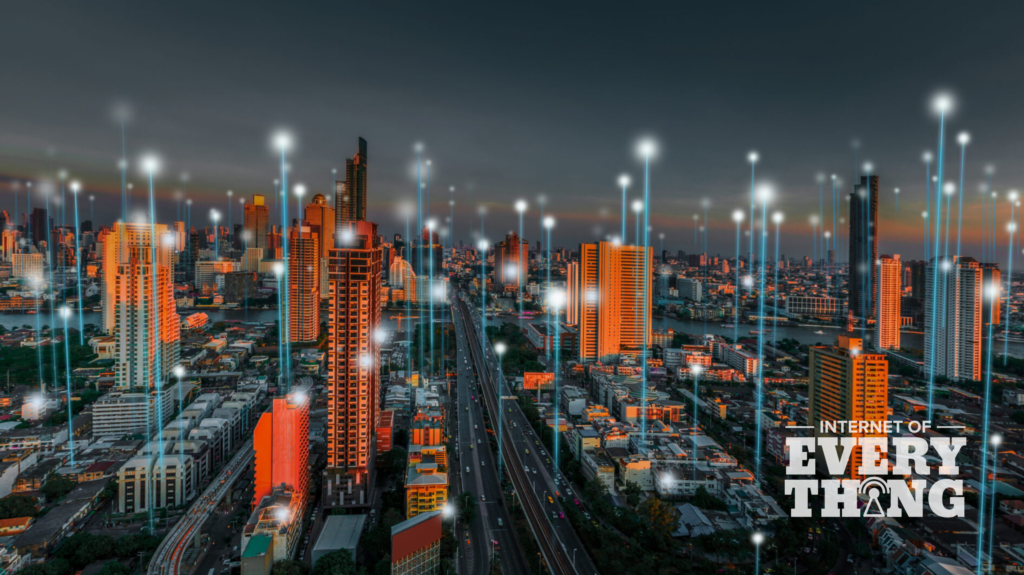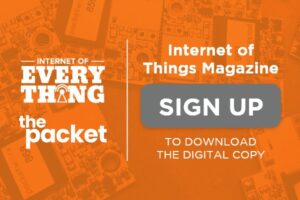
The Philippines is adopting the Internet of Things (IoT) and making it an important ingredient of a smarter digital future for the country.
The IoT has its roots in the late 20th century when the concept of connecting physical objects to the internet began to emerge. Coined by British technology pioneer Kevin Ashton in 1999, Internet of Things envisioned a future where objects with sensors could be embedded and seamlessly communicate with each other.
It was in the early 2000s that significant advancements in wireless communication and sensor technologies paved the way for practical IoT applications. The evolution of technology enabled object identification and tracking, revolutionizing supply chain management and inventory control systems. As internet connectivity became more efficient and affordable, the IoT steadily gained momentum. By the 2010s, IoT applications started multiplying across various sectors that included smart homes, agriculture, healthcare and manufacturing.
The Internet of Things is in the Philippines. At present, this technology is still in the evolution stage but, with proper planning and execution, it offers a game-changing prospect of proliferation on the horizon. During the global coronavirus disease 2019 (Covid-19) pandemic, IoT adoption accelerated and expanded for utility companies in power and water. Local government units (LGUs) employed and deployed IoT solutions for smart city applications and in smart building operations. For IoT to assume a larger role and reach, both government and private sectors must work in tandem.
The private sector must take an active role in continuing to bring IoT to the country. Companies specializing in IoT solutions and services have entered the market, collaborating with various industries to implement IoT applications. These collaborations have enabled sectors such as agriculture, manufacturing, transportation and utilities to leverage IoT technologies for improved efficiency, productivity and decision-making. There should also be efforts to work with educational institutions to raise awareness and provide programs through seminars, workshops and training sessions to equip individuals and businesses with the knowledge and skills required to harness the full potential of IoT.
Meanwhile, government efforts and policies should promote and support the development of IoT in the Philippines. Toward this end, the Department of Information and Communications Technology (DICT), under the leadership of Secretary Ivan John Uy, has been actively involved in formulating strategies and guidelines to encourage IoT adoption. The initiatives focus on creating an enabling environment for IoT development, fostering innovation and supporting local IoT startups.
Catalyst for Change
DICT Undersecretary Jocelle Batapa-Sigue believes the Internet of Things has a significant role in the digital transformation journey of the Philippines that will lead to numerous benefits and advancements across a large area.
“I believe that when we focus on how we can harness IoT and really leverage the use of this technology to improve our systems alongside other emerging technologies, we can greatly contribute to the journey of this country towards digital transformation,” she said.
In 2012, Batapa-Sigue was an Eisenhower Fellow for ICT, ICT Startups, Animation and Game Development and Health Care Information Management. During her month-long stay in the United States, Batapa-Sigue said she witnessed firsthand what IoT could accomplish – from the home to health care. She returned to the Philippines convinced that loT could serve as a catalyst for her nation’s digital transformation journey.
“IoT empowers industries and sectors to leverage data and connectivity to drive innovation, efficiency and economic growth. It opens up new possibilities for businesses, improves services for citizens and helps build a more digitally connected and advanced nation,” she explained.
The future DICT undersecretary had the opportunity to see firsthand what tech firms in Silicon Valley and companies such as Microsoft were developing. She recalled that while Big Data and artificial intelligence (AI) were absent from the conversation at that time, IoT was already visible in many working applications.
“I asked myself, why was IoT at the tailend (in the Philippines)? We could have brought this together with everything and made things easier for other technologies such as Big Data. It was a ‘Eureka!’ moment for me when I realized that nobody was taking care of the hardware. It was all software. (Greater emphasis on IoT) would have made our lives easier. IoT is one of the missing pieces for us to bring Filipino products and services to an industrial level,” Batapa-Sigue pointed out.
As she surveys the current ecosystem in her role at DICT, the former city councilor from Bacolod City said she was “very happy” that she found herself in the “middle of all of these things” and was able to share encouraging initiatives already employing IoT in both private and public sectors.
AGRICULTURE
Batapa-Sigue said, “In agriculture, we are seeing devices such as sensors and actuators that monitor soil moisture, temperature, humidity levels that enable farmers to make data-driven decisions for irrigation, pest control and crop management. This leads to productivity, reduces cost and optimizes resource utilization in the agricultural sector. I would love to see more of these things happen.
“I have met civil society organizations and social enterprises that are already moving in the space. What they are asking from me is to connect them with the academe – there has to be an interplay between them for the sustainability of this technology. LGU participation is important to help farmers in various locations.”
TRANSPORTATION
“IoT has been instrumental in enhancing efficiency, safety and sustainability of current initiatives in our country. Soon enough we will have more connected devices and systems that will allow us real time monitoring of traffic conditions, vehicle tracking and predictive maintenance. IoT will allow the country to have better traffic management, smoother logistic operations and improved road safety.
“As part of national government, I would be more interested in how these technologies translate to outcomes rather than in the technology itself. Building technology is not the outcome. The outcome is how these technologies actually benefit the user,” she added.
HEALTHCARE
“We have examples in the Philippines of enabling remote patient monitoring, wearable health devices and smart medical equipment. These IoT-enabled solutions enhance healthcare access. They enable early detection of health issues, improve patient care by providing real time health data for healthcare professionals,” the DICT official said.
While in the US in 2012, Batapa-Sigue discovered that Health Information Technology (HIT) was primarily about IoT. Semi-robotic machines were deployed to remote areas to address healthcare needs such as taking the temperature, heartbeat and other vital signs of patients, with the data then transmitted to a central location in Texas for interpretation by human doctors and specialists.
She recalled, “What struck me most was this very targeted program of a couple of universities that were implementing what was called a ‘Health IT course’. I asked the administrator whether this was a health course or an IT course. He said it was neither. It was a Health IT course, a specialized course. If we roll out IoT and leverage this technology (in the Philippines), we need to create and design courses – courses that will embed IoT into health or into agriculture because these are specialized (in nature). In this day and age you cannot be a generalist, you have to be a specialist.”
SMART CITIES
Smart cities are already starting to build systems, connected devices, sensors and data analytics that are being utilized to optimize energy consumption, manage waste, enhance public safety and improve urban planning. Where will these lead to? Sustainable and efficient cities that make lives better for their residents. Smart cities exist for the interests of their residents. Many government units now use IoT. There are many municipalities using IoT to prevent casualties from floods by using sensors and devices to monitor and provide early warning.
“loT is identified as a catalyst for the digital transformation journey in the Philippines, empowering industries and sectors to leverage data and connectivity to drive innovation, efficiency and economic growth. IoT has opened up new possibilities for businesses, improved services for citizens, and helped in building a more digitally connected and advanced nation,” the DICT official said.
DICT INITIATIVES
Batapa-Sigue said DICT had already launched a number of initiatives to help promote IoT adoption on a larger scale.
As supervising undersecretary for the ICT Industry Development Bureau (IIDB) of the DICT, Batapa-Sigue oversees a number of programs. The IIDB is mandated to help fulfill DICT’s mission of ensuring sustainable growth of Philippine ICT-enabled industries for the creation of more jobs. Its policies and framework span the ICT Industry, which covers Creative Industry, IT-BPM Industry, Online Freelancing Industry, Startups and Emerging Technologies.
Among IIDB’s projects are Digital Cities 2025; Leveraging the IT-BPM Industry and Fostering Local Talents (LIFT); Stimulating the Growth of Emerging Technologies in the Philippines (SETPH); TechTrends; Digital Startup Development and Acceleration Program (DSDAP); Empowering the Digital Workforce of the Gig Industry (EDGEPH); Empowering, Promoting, Invigorating the Digital Creative Industry (EPIC); and Advancing Government ICT Innovation Leadership and Excellence (AGiLE).
Through the annual Digital Governance Awards, which originated from the eGovernance Awards launched by the National ICT Confederation of the Philippines (NICP) and the Department of Interior and Local Government (DILG), with Batapa-Sigue serving as president, the DICT has successfully identified and acknowledged innovative solutions that leverage the IoT at the local level, like advanced flood and weather monitoring systems.
Recently, Batapa-Sigue led the hosting of the Philippines of the first ASEAN Girls in ICT Summit where IoT-related skills were highlighted among the digital competence targets for ASEAN.
Batapa-Sigue pointed out that all IIDB’s programs involved IoT in different shapes and forms.
TechTrends, for example, are regular learning sessions hosted by practitioners that discuss technology and industry-related developments. Topics include Data Analytics, Cloud Computing, Cybersecurity and, yes, the Internet of Things. TechTrend’s main goal is to help young professionals use these technologies to gain employment or to start a business.
For the future, Batapa-Sigue is pushing for a version of the program that would focus on the policy side to encourage ideas and discourse from a social media audience. There are also plans for an IoT summit, startup hackathons that center on IoT solutions and DICT assistance for IoT startups.
FOUNDATIONS FOR THE FUTURE
As Undersecretary in charge of the National ICT Planning, Policy and Standards Bureau (NIPPSB), Batapa-Sigue said she was currently part of a team formulating a strategy that could serve as a framework for the Philippine IoT roadmap.
While still a work in progress, Batapa-Sigue declared that the plan was comprehensive and would encompass a combination of strategic direction, policies, goals and actions necessary to drive IoT development, adoption, and ecosystem growth.
Based on what she had seen, the DICT undersecretary expressed optimism on what IoT could help achieve at a national level: a disruptive technology that could increase the efficiency and productivity of Philippine industries and allow the country to leapfrog its Asian neighbors and make it more competitive in the global market.
“Whatever the country’s goals are in terms of where we are going to be in 2028, in terms of our gross domestic product or revenues in different sectors, I wish for the Internet of Things to be clearly integrated into the formula. That IoT would be a part of the factors that would push us to really have our digital future,” said Batapa-Sigue.
Credit: Photos provided by Usec. Jocelle Batapa-Sigue
